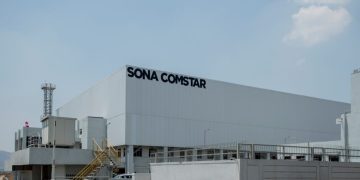In the past six years, only 39 percent (equivalent to 9,672 kilometers) of the initially approved 24,800-kilometer road network in the first phase of the 5.35 trillion BharatMala project has been successfully completed. This data was sourced from the Ministry of Road Transport and Highways (MoRTH) and the Comptroller and Auditor General of India.
The primary objective of this project is to enhance the efficiency of the National Corridor by eliminating traffic bottlenecks through various initiatives, including the construction of elevated corridors, bypasses, ring roads, lane expansions, and logistics parks.
The delay in implementation can be attributed, in part, to a significant increase in costs, nearly doubling from the original estimate of 5.35 trillion to 10.63 trillion rupees by December 2021. This increase was mainly due to rising land acquisition expenses and substantial hikes in input costs. The final completion costs are also expected to be 15-20 percent higher due to the impact of increasing commodity prices on construction expenses, according to ICRA, a rating agency.
Launched in 2017, the Bharatmala project is India’s most ambitious nationwide road connectivity plan. It encompasses the development of 24,800 kilometers of national highways and an additional 10,000 kilometers of highways that were pending under the erstwhile National Highway Development Program (NHDP).
The project aims to optimize the efficiency of freight and passenger transportation across the country by addressing critical infrastructure gaps through initiatives such as the development of economic corridors, inter-corridors, feeder routes, national corridor efficiency improvement, border and international connectivity roads, coastal and port connectivity roads, and greenfield expressways.
One key focus is to reduce the current logistics cost, which averages 18 percent, down to 6 percent and promote investments in manufacturing and exports.
Within the scope of inter-corridor and feeder routes development, a total of 15,500 kilometers of work is planned, with the Indian government approving 6,000 kilometers, of which 27 percent (1,600 kilometers) has been completed.
For National Corridor Efficiency Improvement, out of the planned 13,100 kilometers, approvals have been granted for 5,000 kilometers, of which 33 percent (1,650 kilometers) has been completed over the last five years.
In the category of border and international roads, the government of India has approved 2,000 kilometers, of which 63 percent has been completed.
Regarding connectivity roads in coastal and port areas, out of the sanctioned 2,000 kilometers of road network development, only 100 kilometers have been constructed.
The only category where the Bharatmala project has made significant progress is greenfield expressways. Of the approved 800 kilometers of roads, the completion rate has exceeded 120 percent.
SBI Capital Markets estimates that of the 66,100 crore rupees sanctioned for 24,800 kilometers, only 37 percent has been allocated, and the remaining 41,300 kilometers of the road network will be awarded by FY 25 and construction work will be completed by FY28.
The Ministry of Road Transport and Highways recently introduced the Vision 2047 plan, which aims to exceed the scope of Bharatmala by constructing 30,000-35,000 kilometers of access-controlled highways over the next 15 years, well ahead of India’s 100th Independence anniversary in 2047. The second phase, BharatMala2, will be integrated into the Vision 2047 plan.
ICRA, a rating agency, has projected that the government’s road connectivity project under the ‘Bharatmala Pariyojana’ program may face delays of around six years, with completion expected by 2027-28. If the government manages to execute approximately 4,500-5,000 kilometers of projects under the Bharatmala scheme, all projects are anticipated to be finished by 2027-28.



























































